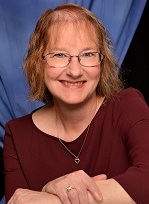The April 2024 ICD-10-PCS updates have a guideline change, and this installment of “In the kNOW” will explain it.
The ICD-10-PCS guideline change is in Brachytherapy at D1.a. The main section of the guideline has not changed. The update takes place under Exceptions and is bolded below.
The change is that another very specific type of brachytherapy seed (Palladium103) is embedded in a collagen matrix. Both Palladium-103 and Cesium-131 are embedded in collagen matrices in an effort to treatment any remaining brain tumor cells after a resection has been performed. This guideline addition of Palladium-103 specifies that the root operation Insertion is appropriate for these procedures.
Let’s look at how this procedure is accomplished.
Source: https://gammatile.com/
Above is a picture of a Gamma Tileä. The tiny, titanium-covered rods are the source of the brachytherapy seeds. The collagen matrix is resorbable, so it will dissolve over time.
After a patient has their brain tumor removed, the remaining deficit is lined with individual Gamma Tilesä as illustrated below.
The brachytherapy is delivered in this manner to be in close proximity to any remaining tumor cells. This focuses treatment at the site where recurrence is most likely to occur. It reduces exposure of normal tissue to the radiation, allowing treatment to occur continually with minimal hair loss.
Over time, the collagen matrix dissolves and all that is left are the titanium rods.
|
Source: https://gammatile.com/
|
In the Medical and Surgical section of ICD-10-PCS, in the body system “Central Nervous System and Cranial Nerves”, coding professionals will use the “Insertion” root operation as directed by the guideline (00H). From there, use the body part of “brain” (0), the approach of “open” (0), the device either “radioactive element Cesium-131 collagen implant” (4) or “radioactive element Palladium-103 collagen implant” (5), with no qualifier (Z). The final codes will be:
NOW you are In the kNOW!!
About the Author
Dianna Foley, RHIA, CHPS, CCS, CDIP, is an HIM professional with over 25 years of experience. She earned her bachelor’s degree from the University of Cincinnati and holds RHIA, CHPS, CDIP, and CCS certifications from AHIMA, along with being an AHIMA-approved ICD-10-CM/PCS trainer. Dianna has held many positions in HIM and is now an independent coding consultant. She previously served as the program director for Medical Coding and HIT at Eastern Gateway Community College. Dianna is an AHIMA-published author and has volunteered with AHIMA on projects including certification item writing, certification exam development, coding rapid design, and most recently has served on AHIMA’s nominating committee. She is a presenter on coding topics at the national, state, and regional levels and serves as OHIMA’s Education Coordinator. Dianna mentors new AHIMA members and also provides monthly educational lectures to coders and clinical documentation specialists.






